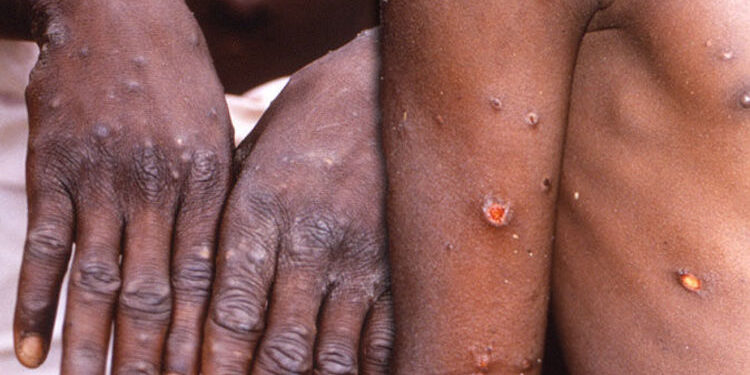The Ghana Health Service (GHS) has confirmed five cases of the Monkey Pox Diseases.
The Director -General of the GHS, Dr Patrick Kuma Aboagye, who disclosed this on Wednesday said the cases were recorded in three regions; Eastern, Western, and Greater Accra.
He said a total of 12 suspected cases have been investigated since May 24, 2022 and the cases where identified through the testing of these suspected cases, one which includes a case reported from the Western Region.
According to the Director- General, one of the cases was recorded in a Ghanaian who travelled to the United States of America from Ghana.
Dr Kuma-Aboagye stated that although there are vaccines available for the treatment of the disease, “I don’t think we have reached a stage where we have to call for vaccination of the cases.”
“So, prevention is the key activity that we all must embark on and also early detection and reporting if we see any rash,” he added.
Symptoms of Monkeypox
Monkeypox is a rare yet potentially serious viral illness that can be transmitted from person to person through direct contact with body fluid or Monkeypox lesions.
Symptoms can be very similar to those experienced by smallpox patients, although they are less clinically severe, albeit visually dramatic, with raised pustules and fever in the most severe cases that can last from two to four weeks.
Signs and symptoms include fever, swollen lymph nodes, headaches and muscle and back aches. It also includes, general bodily weakness, rash with blisters on face, hands, feet, body, eyes, mouth or genitals.
What is Monkeypox?
Monkeypox is an endemic in countries such as Benin, Cameroon, the Central African Republic, the Democratic Republic of the Congo, Gabon, Ghana (identified in animals only), Ivory Coast, Liberia, Nigeria, the Republic of the Congo, Sierra Leone, and South Sudan, caused by Monkey Pox virus.
Human to human transmission can occur through the following: skin-to-skin contact, face-to-face contact, mouth-to-skin contact. It can also be spread through touching bedding, towels, clothing or objects used by an infected person.































